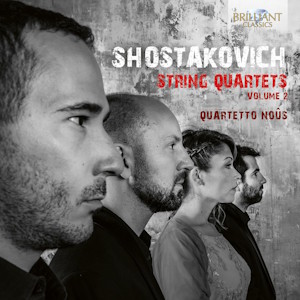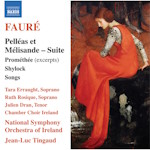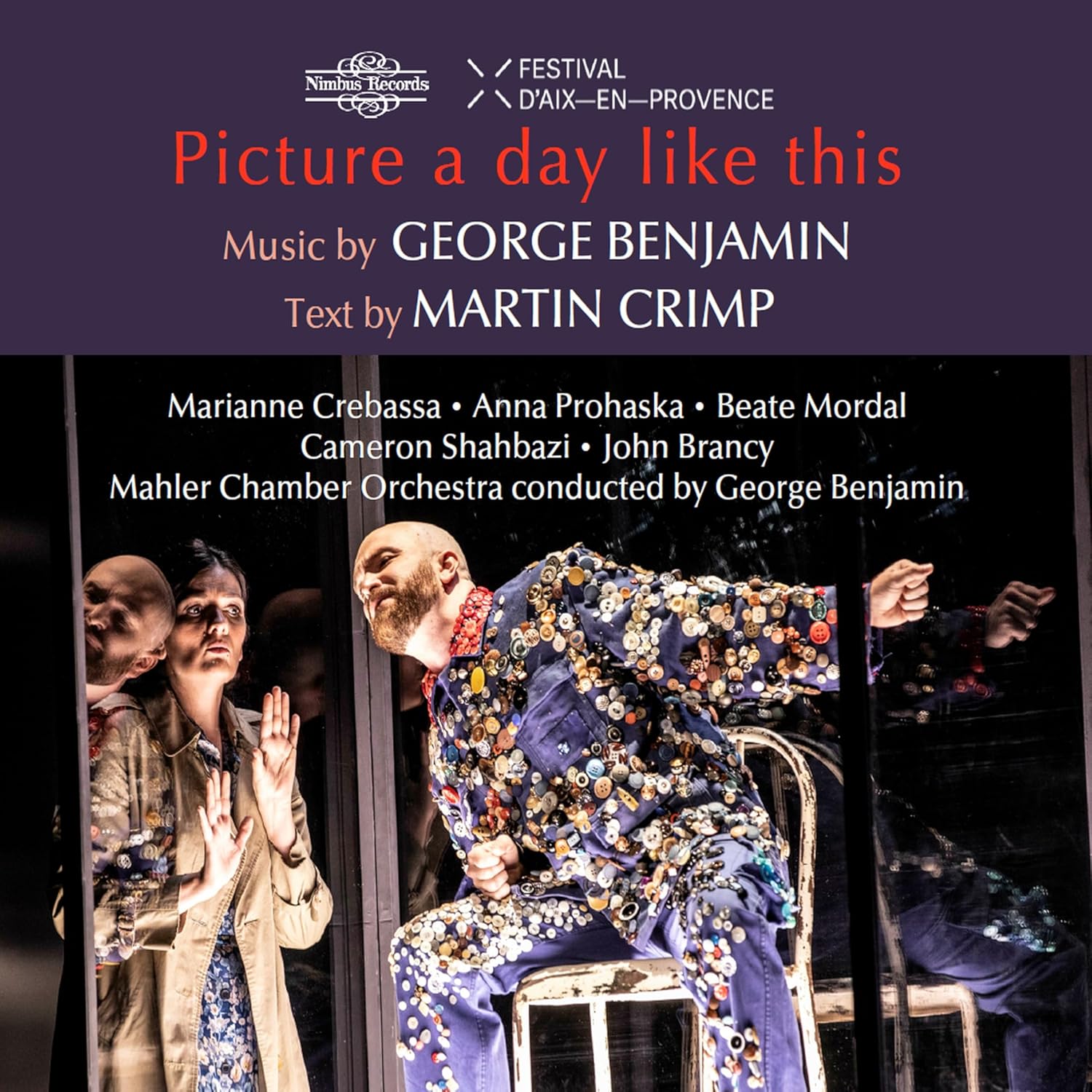
Dmitri Shostakovich (1906–1975)
String Quartet No. 10, Op. 118 (1964)
String Quartet No. 11, Op. 122 (1966)
String Quartet No. 12, Op. 133 (1968)
Quartetto Noûs
rec. 2021, Bartok Studio, Bernareggio (MB), Italy
Brilliant Classics 96420 [65]
In the Summer of 2022, David McDade wrote a perceptive review of the Quartetto Noûs’ first volume of Shostakovich Quartets. The disc was awarded the accolade “Recording of the Month”. In the meantime, a second and third volume of the cycle has appeared on Brilliant Classics. I understand the final volume has been recorded too and awaits release.
The second release from the Italian foursome features Shostakovich’s Quartets 10-12, written between 1964 and 1968. I notice that Quartetto Noûs have played the quartets around the world, most often programming them ingeniously with other composers’ works. In the Autumn of 2022 they came to the UK and played the Tenth putting it at the end of a concert that also included works by Puccini and Bazzini.
Quartet No. 10 is a fine composition. It was written in Dilizhan in Armenia whilst Shostakovich was resting at the composers retreat there. The soft serene tones of the opening andante movement serve as a prelude really to the scherzo that follows. The movement is monothematic, but the harmonies explored are quite ingenious even employing ponticello technique at 2:57. The relentless raw scherzo when it arrives is a virtuosic test of ensemble. The Noûs are superb and play with sharp pointed rhythms and energy. The following passacaglia is one of Shostakovich’s best in my opinion. In several variations he creates a picture of desperate abandonment which the Noûs vividly convey. A sustained chord makes a bridge into the finale, the longest movement in the work. The theme is pointed out by the viola and it is that same instrument which introduces the second countertheme, an Armenian tune perhaps (track 4, 1:03)? After a development of these themes, the original principal subject from the andante and the passacaglia are brought back and fully worked out. The performance is a fine one and the engineered sound is first rate.
Quartet No. 11 was written in 1966 in seven movements which follow one-another without a break. It is by its nature an episodic work and not I think, one of his finest. The seven movements are at least highly varied and Quartteto Noûs relish the differing soundscapes they are asked to portray. Their etude and humoresque movements (tracks 7 and 8) are particularly effective.
Quartet No. 12 came in 1968. In the couple of years since No. 11, Shostakovich had written second concerti for cello and violin. The Twelfth is recognised as being the first work in his final cycle of late quartets. It opens with a tone-row of all twelve notes played on the cello. Shostakovich uses these notes as a theme in and of itself, but he does not go any further into that dodecaphonic world; instead securing his anchor to the final D flat of the row and establishing his tonality there. It is a profound work in my opinion, moving as it does through some fascinating chord sequences and harmonies, especially in the giant second movement.
The first movement is quite low key and calm in comparison to the vast struggle that consumes the second. In this performance, Quartetto Noûs take 18:45 over the movement which make it one of the quickest on record. It begins with a scherzo section based on a motif of four short stabbing notes, followed by a longer one. The music is ragged and the development of the motif is extensive. An adagio section ensues from 6:40 with pensive musings from the cello; at 7:30 the muted upper strings begin to answer. The mood is dark and the cello begins to sing a mournful song. Violin pizzicatos usher in the third part of the movement where previously heard themes and ideas return as in a dream. There is a lovely brightening of outlook heard from 14:10 begun with a rising cello line, although it is the first violin which brings in the sun. The final section proper begins at 16:09 with the 4/1 motif again. It is a life-affirming finish, triumphant and full of energy. The Noûs are fully up to the demands of the work performing with panache, zeal and real commitment. They make a good case for this splendid work and you will surely not be disappointed with any aspect of their interpretation. It would have been nice if Brilliant had individually tracked the last movement but this is a minor detail.
If you invested in the first volume on the strength of our endorsement of volume 1, then you can continue your collecting of this cycle with confidence that you are getting a well-played, superb sounding set. Of course, competition in the Shostakovich quartets is intense. I note that the Asasello-Quartett who Nick Bernard reviewed in Quartets 7-13, are due to release their 1-6 set very soon. Choices choices.
Philip Harrison
Buying this recording via a link below generates revenue for MWI, which helps the site remain free




















